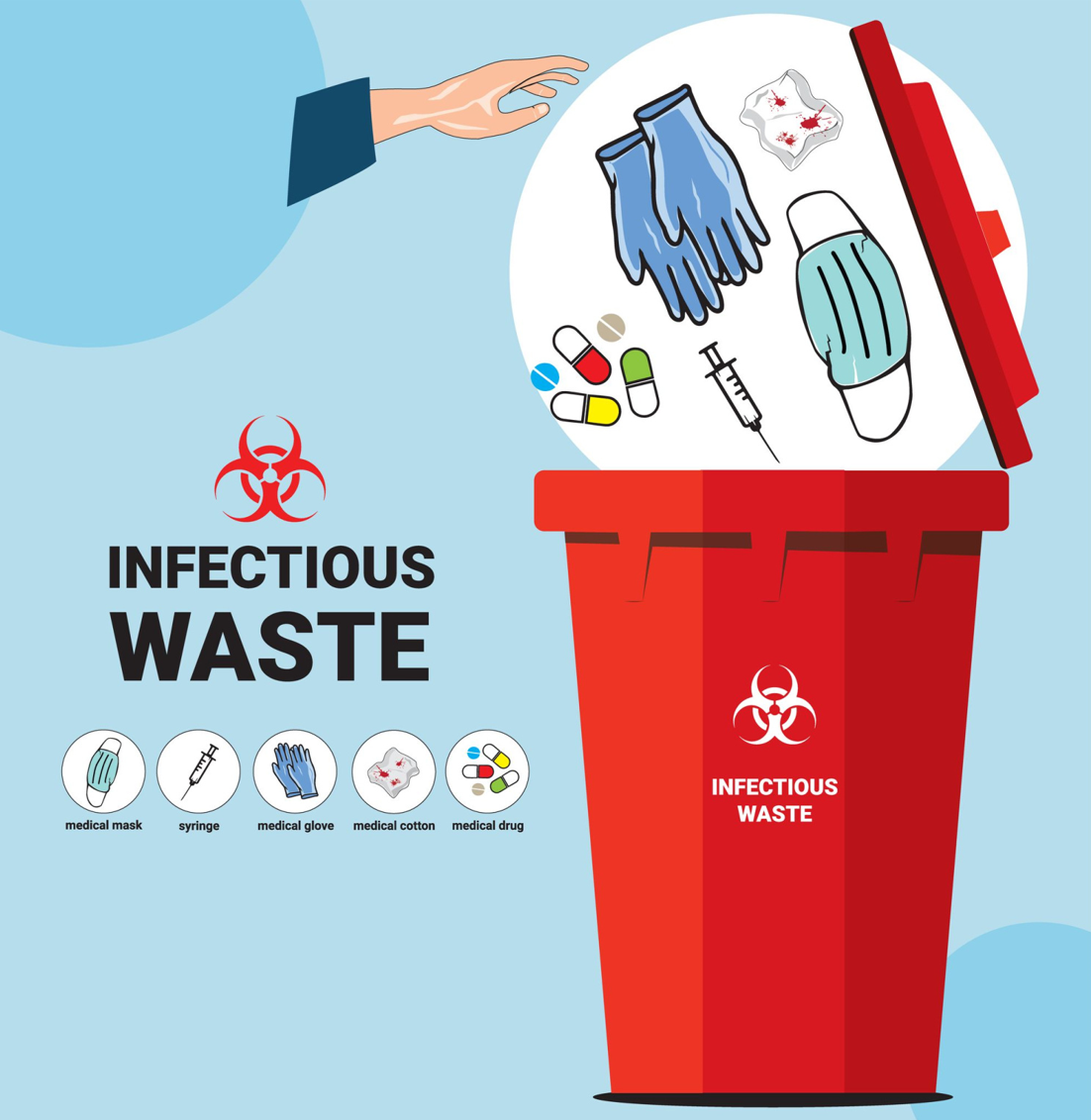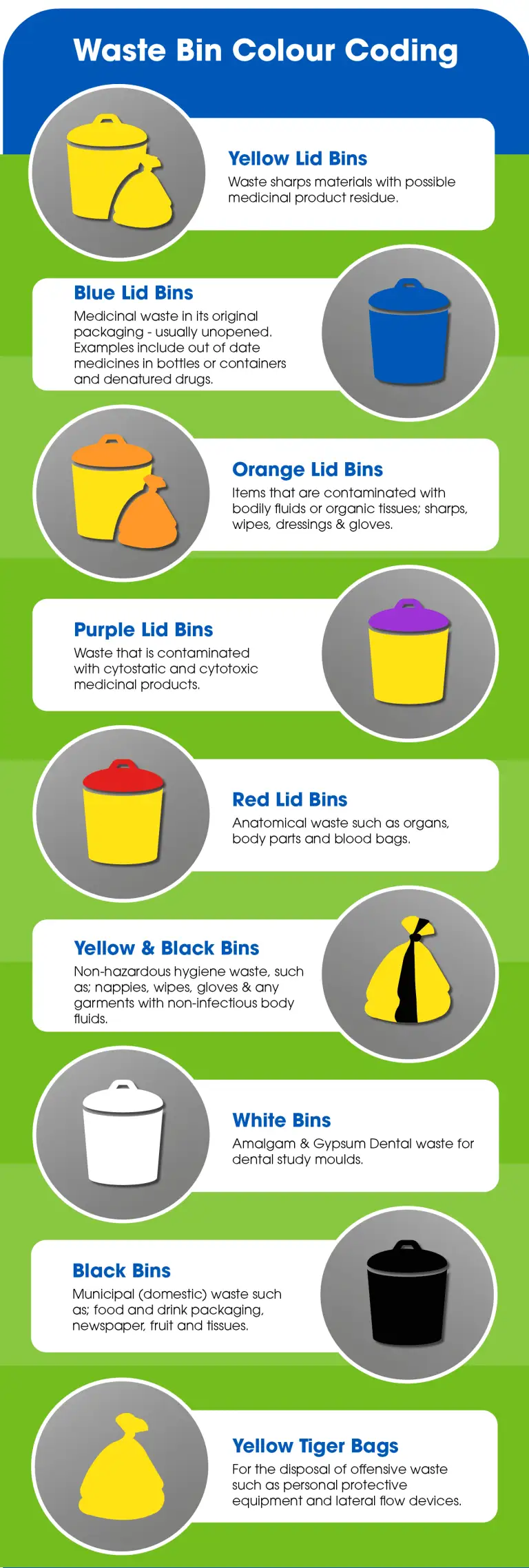Conformity and Rules for Medical Waste Disposal
Conformity and laws for clinical waste disposal play a vital duty in making sure the safety and security and health of both health care experts and the public. Correct administration of clinical waste is important to stop the spread of infections, protect the environment, and keep public wellness. This calls for adherence to details standards and procedures stated by governing firms and bodies. These laws incorporate various aspects, including the category and segregation of clinical waste, correct storage space and taking care of treatments, in addition to transport and disposal methods. By complying with these regulations, medical care centers can lessen the risk of contamination and prospective damage to individuals and the setting. This short article will certainly discover the importance of compliance and provide a review of the essential regulations regulating clinical garbage disposal.
Importance of Conformity
The value of compliance with regulations for clinical garbage disposal can not be overstated. Appropriate disposal of medical waste is crucial for guaranteeing the safety and health of healthcare employees, clients, and the public. Medical waste, that includes products such as used needles, contaminated handwear covers, and biomedical waste, can posture severe wellness risks otherwise handled and taken care of properly.
Conformity with laws makes certain that medical waste is handled in a manner that reduces the potential for direct exposure to hazardous materials and transmittable illness - medical waste disposal. It assists stop the spread of infections, such as HIV, liver disease B and C, and various other bloodborne microorganisms. Compliance additionally plays an important duty in protecting the atmosphere by preventing contamination of water sources, dirt, and air
Failing to follow policies can result in extreme repercussions for health care facilities, including penalties, lawsuit, and damages to their credibility. Additionally, non-compliance might compromise the health and security of health care employees, clients, and the community.
Compliance with laws for medical garbage disposal calls for adherence to details guidelines and procedures. These may consist of appropriate partition, product packaging, labeling, and storage of clinical waste. It also involves utilizing accepted disposal techniques, such as incineration, landfilling, or autoclaving, depending on the kind of waste.
Regulative Agencies and Bodies
Governing companies and bodies play an important role in overseeing compliance with regulations for medical waste disposal. These companies are in charge of establishing standards, standards, and procedures to guarantee the correct and secure handling of clinical waste. They impose and keep an eye on compliance to secure public health and wellness and the atmosphere.
One of the most famous governing agencies in the USA is the Environmental Defense Firm (EPA) The EPA is liable for managing the storage, transport, treatment, and disposal of medical waste. They develop guidelines for waste generators, transporters, and treatment centers to adhere to, guaranteeing that all required preventative measures are required to avoid the spread of diseases and contamination.
Another essential governing body is the Occupational Safety and Wellness Administration (OSHA) OSHA establishes standards and laws to shield workers from work risks, consisting of those pertaining to medical waste. WasteX Medical Waste Disposal. They provide standards for the safe handling and disposal of medical waste to protect workers in medical care centers
In addition to these federal companies, specific states also have their very own regulatory bodies that supervise clinical waste disposal. These firms might have their very own particular laws and demands that have to be followed.

Category and Segregation of Medical Waste
To make certain correct monitoring of clinical waste, it is essential to classify and segregate it according to developed protocols and guidelines. medical waste disposal service. Category and segregation play a critical duty in reducing the risk of infection, protecting the environment, and making sure the safety of health care workers and the general public
Clinical waste is classified into different groups based on its possible threat level. These groups include transmittable waste, pathological waste, sharps waste, pharmaceutical waste, chemical waste, and contaminated waste. Each category needs details handling, disposal, storage space, and transport approaches to lessen the threat of exposure and contamination.
Segregation of medical waste includes separating different kinds of waste at the source. This procedure ensures that waste with various threat degrees is not combined, lowering the capacity for cross-contamination and making disposal treatments a lot more effective. Appropriate segregation is achieved through making use of color-coded containers and tags, which aid medical care workers and waste management employees deal with each kind and determine of waste correctly.
In enhancement to category and partition, healthcare centers should additionally abide by neighborhood, state, and government policies concerning medical waste monitoring. These regulations detail details demands for storage space, transportation, treatment, and last disposal of medical waste, guaranteeing conformity and keeping public health and wellness and safety.
Correct Storage and Dealing With Treatments
Appropriate storage and handling treatments play an essential role in guaranteeing the risk-free and compliant management of clinical waste. Medical waste, that includes things such as utilized syringes, polluted gloves, and ran out medicines, can position significant health and wellness and environmental threats if not handled appropriately. It is vital for healthcare centers and other generators of clinical waste to execute stringent storage space and managing procedures.
To begin with, clinical waste should be kept in durable, leak-proof containers that are especially developed for this objective. These containers ought to be identified with the global biohazard sign and words "medical waste" to clearly suggest the materials. Additionally, the containers must be maintained safely shut to protect against any kind of possible leakage or splilling.
Additionally, it is very important to set apart different sorts of clinical waste to protect against cross-contamination. Sharps, such as needles and scalpels, must be saved in puncture-resistant containers to reduce the risk of injuries - WasteX Medical Waste Disposal. Chemical waste, such as solvents and disinfectants, must be kept independently from various other sorts of medical waste to avoid chain reactions or unsafe direct exposures

Transport and Disposal Techniques
Health care facilities have to make sure the risk-free transportation and correct disposal of their clinical waste to abide by regulations and protect public wellness. Transport and disposal approaches play a crucial duty in stopping the spread of infectious conditions and decreasing the environmental impact of clinical waste.
To carry medical waste, health care facilities need to utilize watertight and puncture-resistant containers that are classified with the biohazard icon. These containers need to be firmly secured to prevent any leak throughout transport. Additionally, medical care centers must develop methods for the transport procedure, including the use of skilled employees and devoted vehicles.
As soon as the medical waste gets to the disposal facility, it undertakes different methods of therapy. One common approach is incineration, which entails shedding the waste at high temperature levels to damage pathogens and decrease the volume of waste. Another technique is autoclaving, which uses heavy steam and stress to disinfect the waste. After treatment, the waste is typically sent out to a landfill or a waste-to-energy center for last disposal.
It is vital for health care centers to collaborate with qualified and allowed waste monitoring companies to ensure proper transport and disposal of clinical waste. These firms have the knowledge and resources to deal with medical waste safely and in conformity with laws.
Verdict
Finally, conformity with guidelines for clinical waste disposal is of utmost relevance to ensure public health and safety and security. Governing companies and bodies play a critical duty in implementing these policies. Proper category and partition of medical waste, as well as following appropriate storage space and managing procedures, are vital to prevent contamination and the spread of conditions. Sufficient transportation and disposal approaches need to be executed to lessen ecological effects. Overall, adherence to conformity and laws is essential to successfully manage clinical waste.
Clinical waste, which includes products such as used needles, polluted gloves, and biomedical waste, navigate to this website can present major wellness risks if not managed and disposed of effectively.
These classifications consist of infectious waste, pathological waste, sharps waste, pharmaceutical waste, chemical waste, and radioactive waste.Partition of medical waste entails separating different kinds of waste at the resource. Proper partition is attained through the usage of color-coded containers and tags, which assist medical care employees and waste administration employees identify and deal with each kind of waste appropriately.
Chemical waste, such as solvents and disinfectants, must be saved separately from other types of medical waste to stop dangerous exposures or chemical responses.